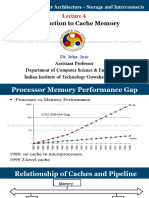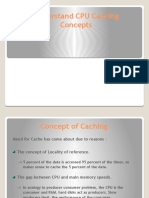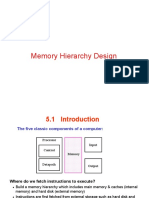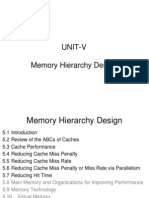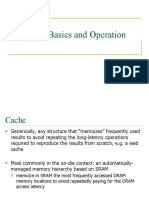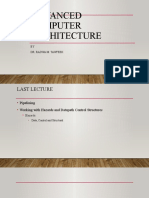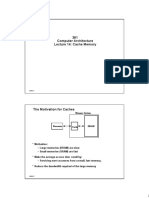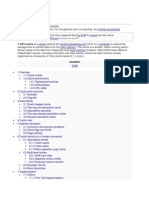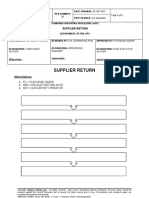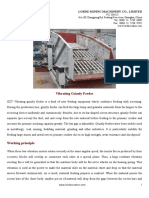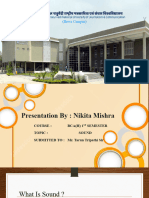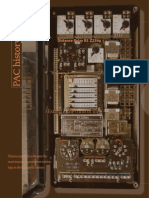0% found this document useful (0 votes)
27 views9 pagesCache Memory
There are 3 levels of cache memory: level 1 cache is part of the processor, level 2 cache is part of the processor, and level 3 cache is shared by all processor cores. Cache performance is affected by cache hits, misses, replacement policies, and write strategies. The locality of reference principle states that if a memory location is accessed, nearby locations are also likely to be accessed soon (spatial locality) or the same location may be accessed again (temporal locality).
Uploaded by
망토Copyright
© © All Rights Reserved
We take content rights seriously. If you suspect this is your content, claim it here.
Available Formats
Download as DOCX, PDF, TXT or read online on Scribd
0% found this document useful (0 votes)
27 views9 pagesCache Memory
There are 3 levels of cache memory: level 1 cache is part of the processor, level 2 cache is part of the processor, and level 3 cache is shared by all processor cores. Cache performance is affected by cache hits, misses, replacement policies, and write strategies. The locality of reference principle states that if a memory location is accessed, nearby locations are also likely to be accessed soon (spatial locality) or the same location may be accessed again (temporal locality).
Uploaded by
망토Copyright
© © All Rights Reserved
We take content rights seriously. If you suspect this is your content, claim it here.
Available Formats
Download as DOCX, PDF, TXT or read online on Scribd
/ 9




